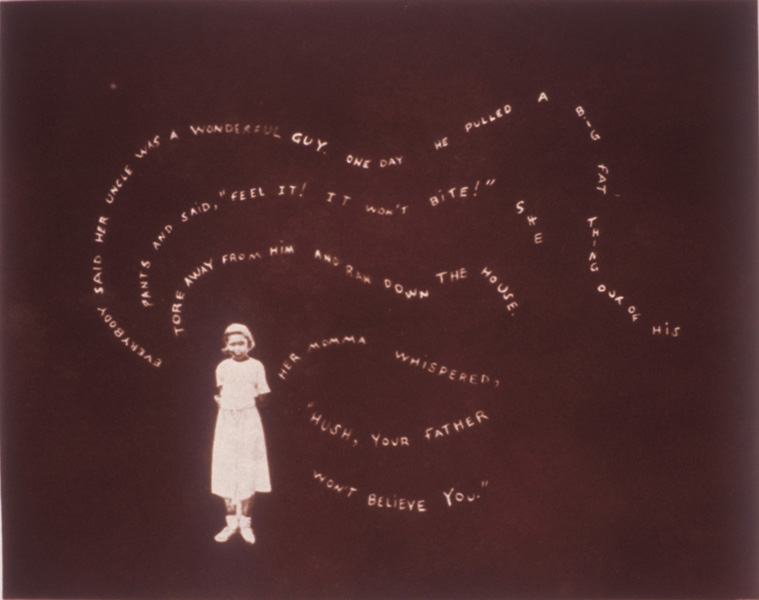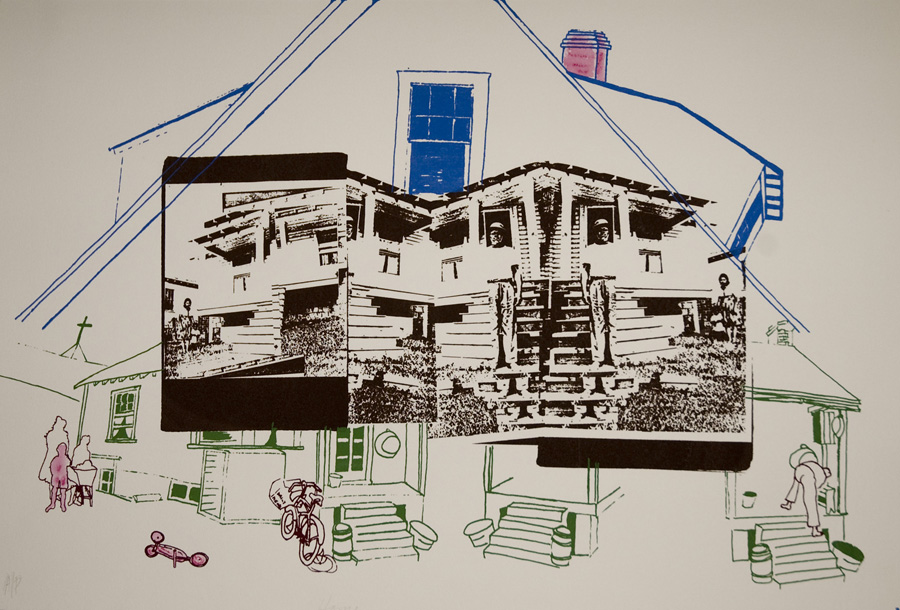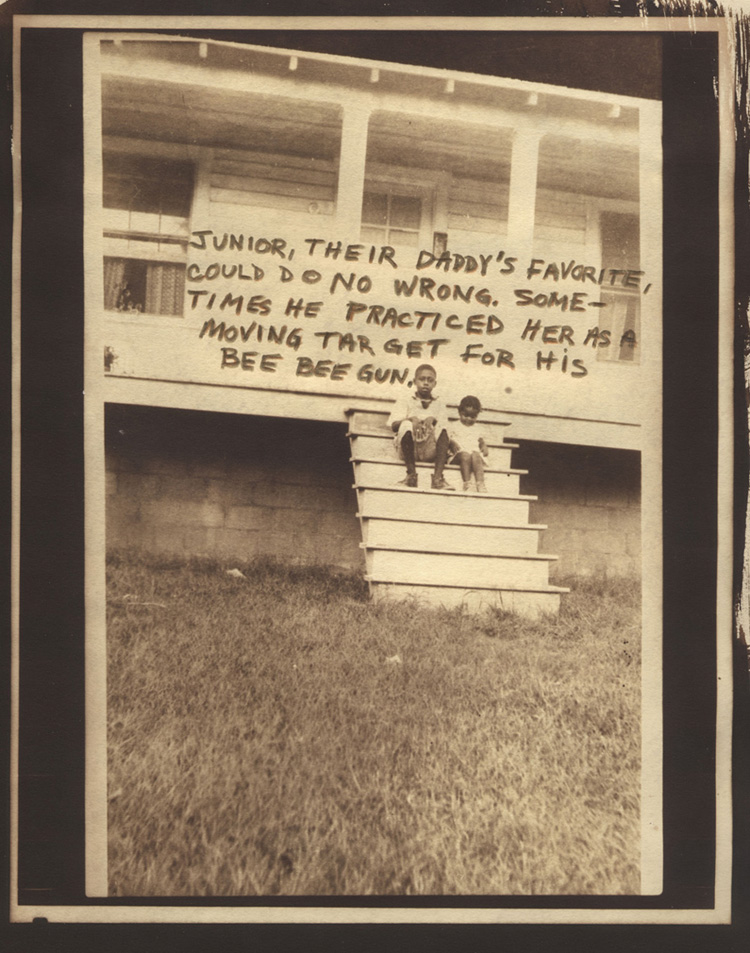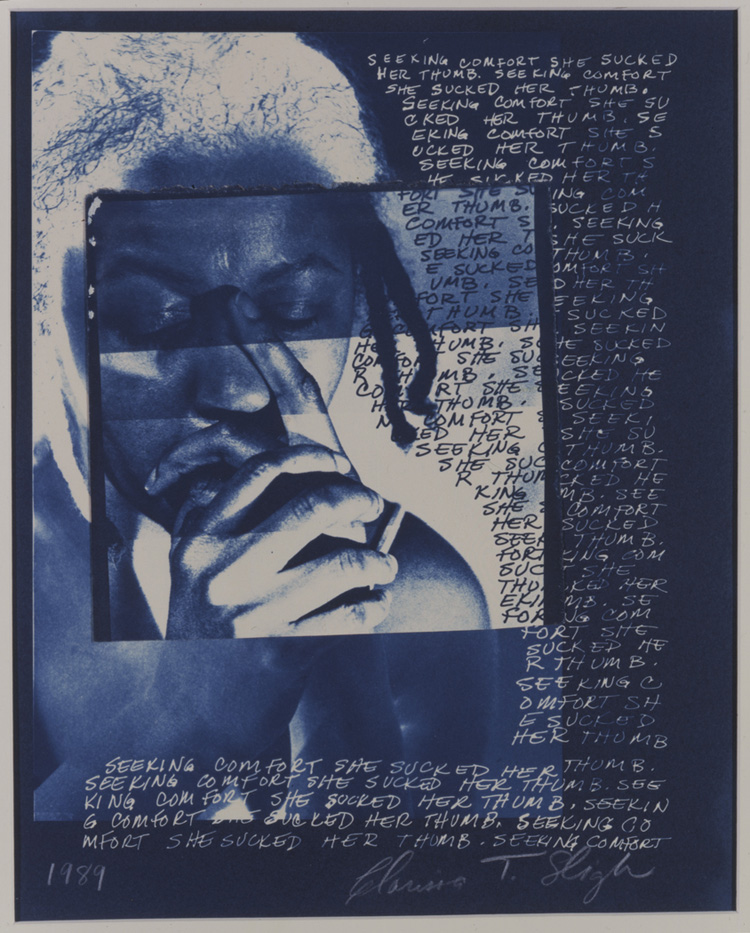Clarissa Sligh, born in 1939, is an American artist and woman of colour who is best known for her work that comments on various social issues that relate to her own identity. Sligh creates her pieces through different mediums, including photography, collage and drawings. Sligh’s love for photography started at a young age, asking for a camera for her 12th birthday. However, Sligh only started to pursue this as a career path after quitting her job at NASA and working two part time jobs whilst taking painting classes at Howard University, after vowing to “find a richer life, with art making a part of it.”. It was here she claims she first started to see herself as an artist. Sligh’s series ‘Reframing the Past’, shown below, displays Sligh’s old family photographs and combines them with other images, drawings or text in a collage like manner. Here she re-reads and re-evaluates her family’s photo albums.
Analysis
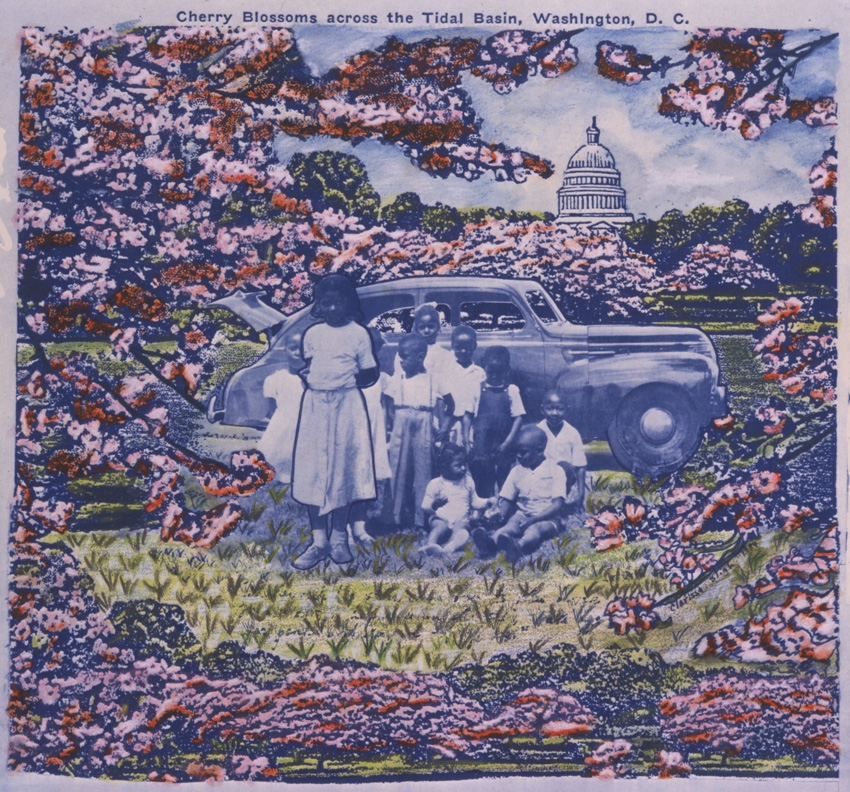
This collage image created by Clarissa Sligh showcases an old photograph of Sligh’s family standing in front of what is most likely their family car, placed in a setting of blossoming nature in front of what appears to be the USA’s capitol building. This image seems to be composed of cut outs of images and drawings, which could be from a post card, however the portrait in the centre looks as if it has been blended into the illustrated background, meaning that Sligh may have uses a tool such as Photoshop to artificially layer these images. The black and white tone of Sligh’s family portrait strongly contrasts with the vibrance of the surrounding artificial setting. Here the branches of the cut out trees frame the central portrait, encircling it. These branches act as leading lines in this composition, drawing the viewer’s eye around the edges of the piece and into the centre photograph, which acts as the focal point of the image, as well as into the background towards the capitol building. There is little amounts of empty space in this piece, with the exceptions being the sky surrounding the capitol building and the illustrated grass in front of the portrait.
From at technical viewpoint, it can be said that from looking at the central image, natural light was used to take this photograph, as it is taken outside in an informal manner. This appears to have been taken at midday, due to the shadows being directly below the car and the children. As a result of the children in the image it is likely that a fast shutter speed was used to take this photography, as the younger children appear to still be in movement but are not blurry. In addition, the aperture used seems to have been small to mid setting, as the photograph is taken from further back, allowing to capture all the children, and the car behind them appears to have the same amount of focus placed on it. However as the remaining background has been cut out, it is hard to say this for definite. The ISO setting here was also most likely low, due to the large amounts of natural light entering the lens.
This piece of work is part of Sligh’s series ‘Reframing the Past’ which she stated was an attempt to re-evaluate and re-investigate her family photo album. She did this after realising that her early family album project was a produced through the lens of a stereotypical white American family, meaning that with this project her aim was to create a record of positive images of her black family. With this information, it could be argued that this image was an attempt to place her family in an idealistic setting in which she wished she was surrounded by in her youth. With this the capitol building in the background could represent the traditional American family values she feels she was deprived of. This may be a comment on racial injustice and how black people in The USA were forced to conform to colonialist views that white people were more civilised. This in turn forced many black people to have to surrender their cultural identities and backgrounds to these Eurocentric ones that they had been forced into. Alternatively, Sligh may also be trying to communicate how it actually felt to grow up in her family, surrounded by life and vibrance, which the original photograph may not fully indicate.




